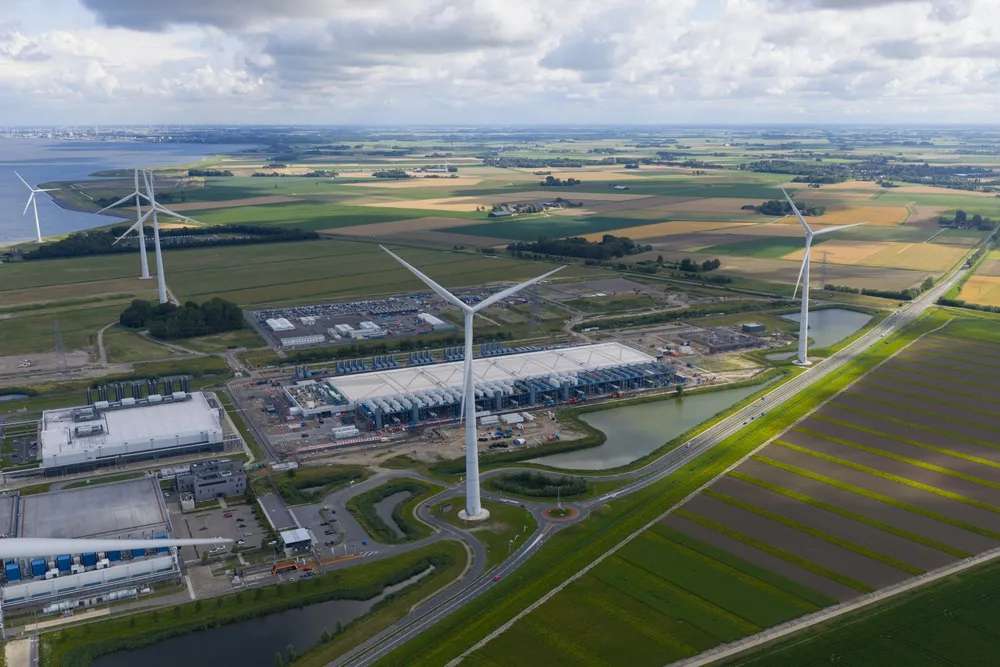Experts say AI changing the game for data centres and power networks
A 10MW data centre would have seemed big not that long ago – now gigascale facilities are forcing the IT and power industries to rethink how they interact

As it confronts one of its biggest ever challenges – meeting the soaring energy demands of AI and cloud computing – the data centre industry is suddenly at the forefront of the power sector's collective mind.
From co-location to the cloud and AI
A decade ago, that changed when the likes of Microsoft started to offer cloud-based services, ramping things up to campuses as large as 300MW.
“But over the last 18 months where you've got the whole push towards AI which is dramatically increasing the power demands again. Now we’re seeing talk about 3GW campuses – but don’t forget the other [services] are still happening,” said Williams.
What will this new breed of AI data centre actually do? Williams explained the facilities fall into two major categories. The first is ‘training’ – developing new AI models. “Those are the ones you can stick as far away as you want, wherever you've got the very cheapest power and the very best climate, because it's not about getting data to and from it quickly, it's about getting lots of data to it then it churns through it over several months.”
A second category of data centre actually delivers the AI-enabled services such as Copilot that are becoming increasingly crucial in everyday life. Those facilities, devoted to what is called AI inferencing, can be much smaller but conversely need to be physically closer to sources of data demand, minimising the lag in response to a query, known as latency in the IT world.
A challenge, but a 'unique opportunity'
Regulated utilities and grids face many competing demands beyond those of data centres, while the need to decarbonise makes it even more of a challenge, she added.
However, Phillips pointed out, data centres are far from the only source of soaring demand. Electric vehicles and air conditioning are among the other big electrification trends coming down the track, with the key difference that they are less predictable.
A single heatwave can, for example, prompt the residents of a city en masse to purchase air conditioning units, creating huge new potential peak loads “that the grid has no visibility on”.
In the case of data centres, “they are very organised... you have extremely good visibility” often for years at a time. “You can negotiate those contracts and there are opportunities there for how data centres can manage that load”.
Phillips believes that as the worlds of power and data align more closely, data centres will offer a “tremendous, positive opportunity” in terms of how they meet and manage power demands. She points out that major tech companies have not just a huge requirement for power but the financial resources to help build site-adjacent projects if necessary, easing pressure on public finances.
Phillips added: “Also policy-wise this is a unique opportunity, because suddenly the policy world is thinking about this as a problem… the way that we fund grids, the way that we think about tariffs... the way that this sector is regulated.”
From the data centre sector’s point of view, how can it juggle the competing demands of high-volume, continuous power supplies – which has seen some turn to gas or even nuclear – with the push to run green facilities? Are the two compatible?
Williams said: “It varies a lot depending on the geography and the location you're talking about.” In the Nordics, with very high penetration of sources such as wind or hydropower on the grid, it's possible to run a 100% green facility, but the challenges are different in other markets.
“In the UK at the moment, we've got customers that are trying to build data centres [and facing long waits for grid availability] looking at potentially an interim solution like... fuel cells?”
Changing the game on planning
“What we can see is that the screening in the early phases becomes more and more crucial to actually decide where to place the data centres. [That includes] grid screening, environmental impact screening, and also where to connect to the fibre network.”
“The electrical side especially is becoming more and more crucial, because you want to have sufficient power, but also power that is resilient. At the same time, you also need uninterruptible power supplies. You need strong backup.”
While network operators look at options such as providing dedicated lines to serve large data centres, Ammentorp agreed that there will be some that will potentially go off-grid, “maybe for an interim period until the backbone has been built”.
“Some of them are also looking into how to cope with that. That could also be based on gas or, as you also potentially see, not that we have been involved in it, but in the US it is also [being explored] whether you could use small nuclear reactors in the future.”
Ammentorp added, however: “The aim is to keep it as renewable as possible. That's also why the screening [attempts to place data centres close to] renewable sources.
There are possibilities, if you have a distributed system nearby, to use the surplus heat from the data centre… [to get] some kind of flexibility out of that into a heating system as well, for a city or something like that."
(Copyright)